Use of Texture Analyzer on Pharmaceutical Products
Consumers judge pharmaceutical products to some extent on how the item feels to the touch. This property can be described by the term “Texture” which is a mix of related, multi-dimensional attributes. The definition is that “Texture” is the sensory and functional manifestation of the structural, mechanical, and surface properties of samples detected through the senses of vision, hearing, touch, and kinesthetics (Alina Szczesniak., 2002).
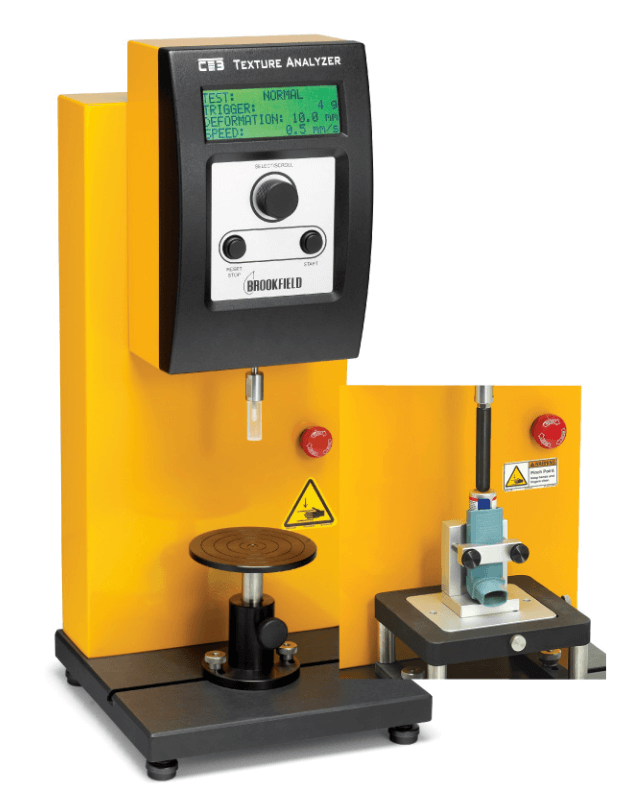
The quality of ingredients used in the formulation and how it is processed is a main factor that determines quality of texture. Out routine physical tests in product development and quality control are necessary to ensure consistency within established limits. The right texture is important as consumers/patients tend to have an expectation for the texture of a familiar pharmaceutical product.
For example:
(1) Metered dose inhalers (MDIs) are designed to deliver precise/accurate and reproducible doses of the drug to the lungs or nose of a patient. Patients expect their inhaler to deliver the required medication at often crucial times when physical strength may be extremely low. Reliable functioning of the metering valve upon compression is most important.
(2) Patients using suppositories expect them to be smooth and neither too hard to cause discomfort nor too soft. On application, the suppository is expected to be hard enough as not to break during insertion. It is therefore important that the right texture be achieved during production.
Texture Analyzer is used to determine the texture of solid and semi-solid pharmaceutical products. This instrument measures the response of a pharmaceutical product sample to actions such as shearing, penetration, rupture, compression, and tension of pharmaceutical product. Table 1 Lists various pharmaceutical products and some of the types of tests that can be performed to determine their texture is shown in table 1.
|
Rupture Tests |
Compression Tests |
Tension Tests |
|
Pharmaceutical Films |
Metered Dose Inhale |
Alginate Raft |
|
|
Tablet Diametric Compression |
Gelatin Capsules |
|
|
Blister Packs |
Seal Integrity |
|
|
Suppositories |
Mucoadhesion |
|
|
Mucoadhesion |
Tablet Coating |
|
|
Bi-layer Tablets |
|
|
|
Transdermal Patches |
|
|
|
Tablet Coating |
|
|
|
Soft Gel Capsules |
|
|
|
Hypodermic Needle Sharpness |
|
|
|
Syringes |
|
The Texture Analyzer uses downward (compression) or upward (tension) movements to establish correlation between the quantitatively measured physical properties of a pharmaceutical sample and the subjective sensory properties realized by using or handling the product. Using different probe geometries, the texture analyser can push down or pull apart the sample. The test results are displayed on the instrument screen (in standalone mode) or as load vs. time or load vs. distance graphs when controlling the test using software on a PC.
Operating the Texture Analyzer software has several advantages as the operator can:
- Create new test methods within a single window (see Image 1)
- Enter sample description and information in a single window (see Image 1)
- Choose the desired measurement units (see Image 2)
- Select relevant results based on the type of test performed eliminating the need for complicated macros (see Image 3)
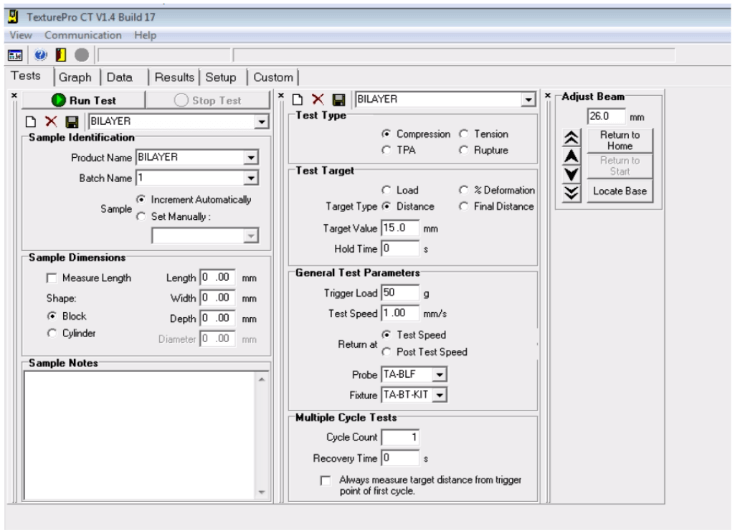
Image 1: Rapid Test Setup Screen Shows All Control Parameters for Texture Test
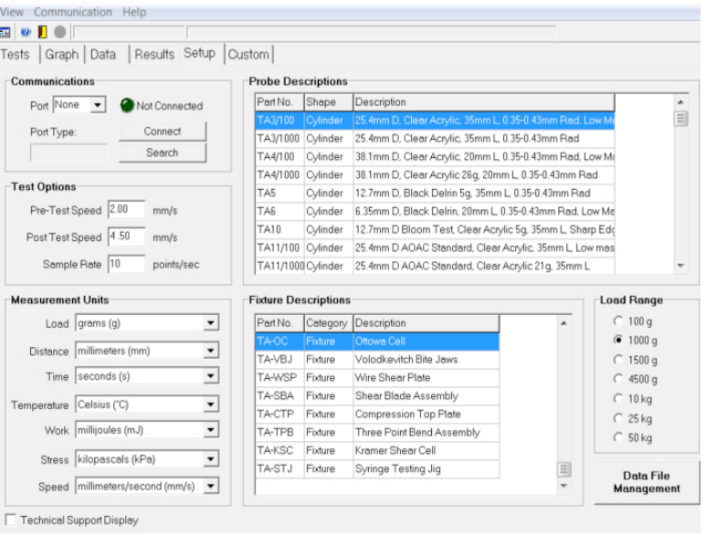
Image 2: Choice of Test Parameter Units Appear on This Screen
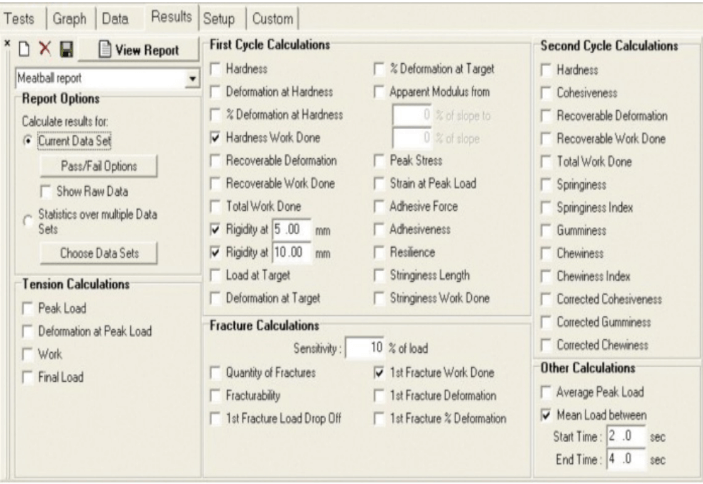
Image 3: Screen Shows Choices for Measured and Calculated Values
Other advantages of using the Texture Analyzer automation Software include:
- Performing statistical analysis for up to 25 samples.
- Storing data in a compact form in a Microsoft access database allows easy, logical file naming conventions
- Easy export of data as external files to other computers for analysis and viewing. The external files can also be used for archiving.
- Easy export of data in Excel format to other computers
- Configuring your own customized display for the data
- Up to five saved data files can be overlaid for comparison purposes e.g., during product matching, new product development, and R&D studies.
- Capability of copying graphs to a clipboard, saving graphs as a bitmap picture, and printing.
When formulating a drug intended to be encapsulated, one key element that manufacturer needs to take in consideration is whether the drug substance is compatible with the gelatin capsule shell. Shell can become brittle and prone to breakage under mechanical strain if hygroscopic lling absorbs water from the capsule shell. Using a Texture Analyzer manufacturers can identify the effect of fillings on the strength and stability of capsule. (See Image 4)
Using Texture Analyzer software, the graphs of the results and statistical analysis of single or multiple data les can be obtained. Graphs can also be overlaid for comparison purposes to see effects of different formulations on the gelatin shell. The raw data can also be exported as external les to other computers enabling multiple users to view and analyze the data at different geographical locations.Image 5 shows a typical example of a graph with overlays from multiple data les. Table 2 shows the statistical analysis of the test.
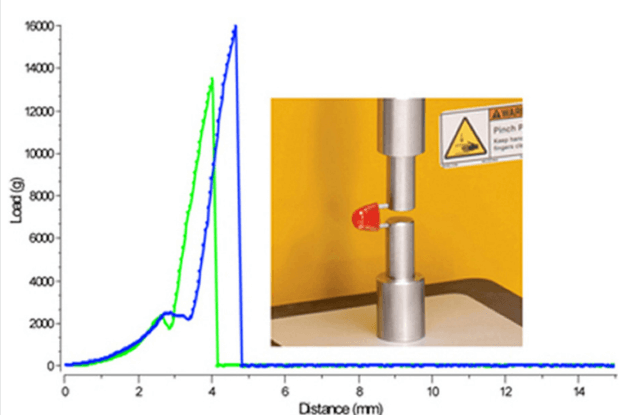
Image 4: Brookfield’s Texture Analyzer Measures the Tension Force to Split Open Gelatin Capsules. Data Set #1 Sample A (Green Gelatin Capsule) and Data Set #2 Sample B (White Gelatin Capsule)
Two different capsules have been tested. The data from each test appears in image 5. The maximum peak value is a measure of sample hardness. This is the force required to split open the capsule. The area under the graph from the start of the test to the target distance point (15 mm) is a measure of work done. This is the work required to overcome the strength of the internal bonds within the gelatin. The distance to breaking point is measured as the deformation to peak load and is an indication of the elasticity of the gelatin.
Image 5 shows that Sample A is much harder than Sample B. This is supported by the mean work done values (see Table 2) where the value for Sample A is twice that of Sample B. Sample A also has a greater elastic component than sample B as shown in the statistical results obtained for the mean deformation at peak load values for the two sample types.
Statistical analysis of the raw data can be achieved for multiple and single data les. The Texture Analyzer software allows the operator to choose which results they wish to view. The table below summarises the test results for the two sample types. Ten samples have been tested for each sample type.
Table 2. Mean values (n=10) for the green and white gelatin capsules as obtained from the Texture Pro CT software
|
Sample |
Peak Load (g) |
Deformation at Peak Load (mm) |
Work Done (mJ) |
|
Green Gelatin Capsule |
16585 + 163 |
5.13 + 0.44 |
281.8 + 91.2 |
|
White Gelatin Capsule |
12813 + 239 |
4.06 + 0.38 |
114.8 + 37.9 |
The Texture Analyzer is an enormously powerful, yet user friendly, tool for quantifying and characterizing the properties of pharmaceutical samples.
Want More Information on Texture Analysers? |
|
